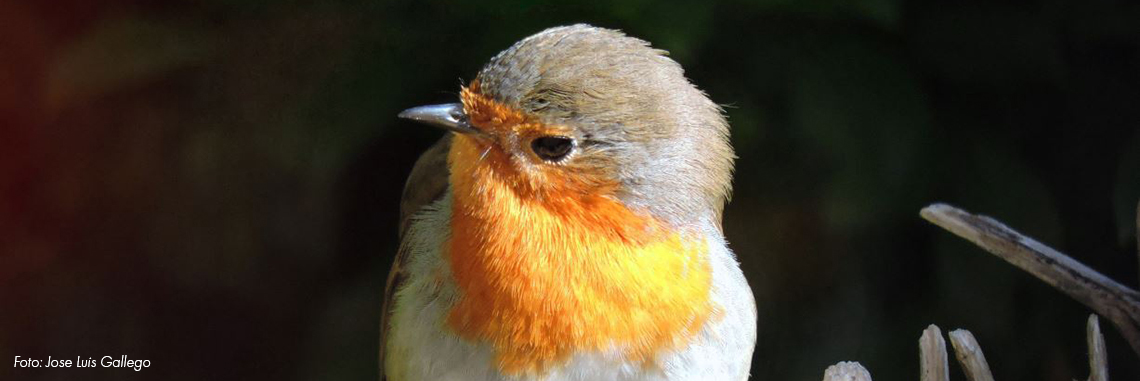Robin, Our Beloved Feathered Friend

A Climate Change Messenger. By Jose Luis Gallego, environmental communicator (@ecogallego)
While out on a stroll in the countryside or park on a cloudy autumn day, we might hear a familiar bird call. An electric, metallic, dry chip-chip, rhythmically repeated among the shrubs, followed by a beautiful, flute-like melody. And then, with a smile, we realize it is a robin, returned from its breeding grounds in northern Europe.
The robin (Erithacus rubecula) is one of the most popular birds of all European fauna and deeply cherished by people across the continent. In 2015, following a vote which saw the participation of close to a quarter million citizens, the robin was named the United Kingdom’s official bird. On that occasion, Rory Stewart, then British Minister of State for Environment, remarked, “It is marvellous that so many people voted for this friendly little bird as their favourite, because the robin is synonymous with the British countryside”. This is not only true for Britain, but all of Europe.
Robins are at home in all kinds of woodland, especially urban parks and gardens, and, in Spain, they are also one of the most common denizens of our countryside. Populations drop in the summertime, when most robins migrate to northern Europe to breed, and rise again in autumn. This is especially true for very cold years, when Russian and Scandinavian robins return to our fields and forests to escape the harsh winters of the far north.
Robins are easily identifiable by their characteristic, orange-tinged chest. That said, their long and exceptionally thin legs, along with their otherwise plump and affable appearance, make them recognizable even in silhouette. The plumage of young robins is more muted, with less distinctive hues and cream-coloured flecks. The birds’ wings are short and rounded. Robins tend to grow to a height of about 15 cm and weigh 20 grams.
Robins are very sociable and curious. They get along well with humans and won’t hesitate to pop out of the thicket to position themselves in the middle of the path to see who is venturing into their domain. This, however, isn’t actually due to their inherent friendliness, but an expression of their extreme territoriality. This will lead robins to confront any intruder who sets foot in their turf, especially when this happens to be a male of the same species.
A robin, photograph by Jose Luis Gallego
Robins mainly feed on insects, catching whatever invertebrates are most abundant in the trees or on the ground of parks: earwigs, ants, beetles, and spiders. They aren’t particularly skilled at catching flying insects. In the autumn and winter, robins round out their diet with forest fruits and berries. A frequent diner in urban “kitchens”, robins are extremely fond of mealworms. Their passion for these invertebrates is so great that they won’t hesitate to eat from the palm of our hands, as I’ve been able to personally witness on several occasions.
Robins are a rural and urban asset, performing important services as a natural control against pests and other crop foes. This makes their presence a welcome sight for farmers, rural residents, and people in general. Common and abundant in population, robins are currently included as a “least-concern species” on Spain’s red list of birds. This classification, however, could change.
Over the past decades, and as a result of rising global temperatures, there has been a notable decrease in the number of robins coming to winter in Spanish territories – in other words, the birds that decide to leave their breeding grounds in northern Europe to spend the winter in our temperate woodlands. And this number is significant. A study in the scientific ornithology journal Ardeola, published by the conservationist organization SEO/Birdlife, calculates that said decrease might already be as high as 80%.
Biodiversity is an excellent global warming sensor, and this revealing data point would make the robin a new bioindicator of the climate crisis. Scientists use the term “bioindicator” to refer to species whose changing behaviour, phenology or distribution bear witness to accelerating climate change. And with their demographic decline in Spain, robins are acting as messengers of said acceleration.
